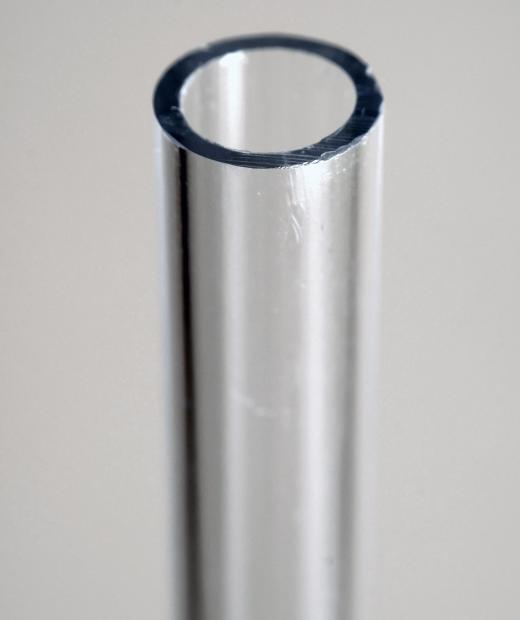At AboutMechanics, we're committed to delivering accurate, trustworthy information. Our expert-authored content is rigorously fact-checked and sourced from credible authorities. Discover how we uphold the highest standards in providing you with reliable knowledge.
What is Plastic Resin?
Plastic resins are made by heating hydrocarbons in what is known as the "cracking process." The goal here is to break down the larger molecules into ethylene, propylene, and other types of hydrocarbons. The amount of ethylene produced depends on the cracking temperature.
Once the cracking process has been completed, the compounds are formed into chains that are known as polymers. Different polymers are combined to make plastic resins that have the characteristics needed for different applications. Once the plastic resins have been formed, they are used to make many different kinds of products.

The appropriate type of plastic resin is selected to make the particular type of product needed. Some plastics are filled with products that are hot when packaged, such as those used in some food plants. Others are used for chemical products, and would need to have different properties.
One type of plastic resin, known as polyethylene terephthalate, is used to make products like soft drink bottles, bottles, and waste containers. High-density Polyethylene is used to make milk jugs, bottles for vitamins, and film containers. The plastic wrap that you use in your home to keep food fresh is made from vinyl/polyvinyl chloride. Plastic bags, garment bags, and netting is manufactured from low-density polyethylene.

Many products that are familiar to us are made from thermoplastics. This is a very versatile material that softens when heated. It can then be molded into various shapes. Colors may be added as desired, depending on the application. Other additives are used to make the product resistant to damage from heat, light, or bacteria.
Thermoplastics are a popular choice for food packaging materials, since they can be molded into a variety of shapes at a relatively low cost. When you pick up a milk jug or a soft drink bottle, you are seeing an example of a product made from thermoplastics. Other applications for plastic resins include fibers used to make carpets, bumpers on vehicles, and microwavable containers. Instrument panels on the inside of cars, wall paper, and credit cards are also made from this material.

Even though plastic resin can be used to make many products that we use every day, many people are not getting the message that they can be recycled. Only about half of plastic resin products are used to make other products. The rest of them end up in the garbage, which is not good news for the environment.
AS FEATURED ON:
AS FEATURED ON:















Discussion Comments
@Georgesplane- Polylactic acid is a great alternative to food manufacturers that are looking buy plastic resin food containers, but some of the benefits have been a little misleading.
Indeed, PLA is more environmentally friendly. According to the Smithsonian, it takes 65% less energy to produce, and emits 68% less emissions, than PET plastic. PLA also only costs about a dollar a pound to make.
The problem is in the biodegradable claims of PLA. PLA is only biodegradable in industrial composting operations, and most of those operations do not accept consumer waste. PLA also creates lactic acid when it breaks down, so compost cannot have concentrations of PLA that are too high, or the compost will be too acidic. For PLA to become a wonder plastic, the industry must develop the waste management channels for PLA.
A type of plastic resin called polyactic acid (PLA) is made from corn instead of hydrocarbons. PLA plastic resin prices are similar to the cost of hydrocarbon plastics because the cost of oil is high.
Even more promising is the fact that CLA plastics are biodegradable and renewable. Under certain conditions, the PLA plastics can be composted into harmless organic compounds.
Companies like Wal-Mart, Coca-Cola, and Ben & Jerry's (Unilever) are using PLA plastics. Wal-Mart is using enough PLA plastics to save the company 800,000 barrels of oil per year.
Post your comments